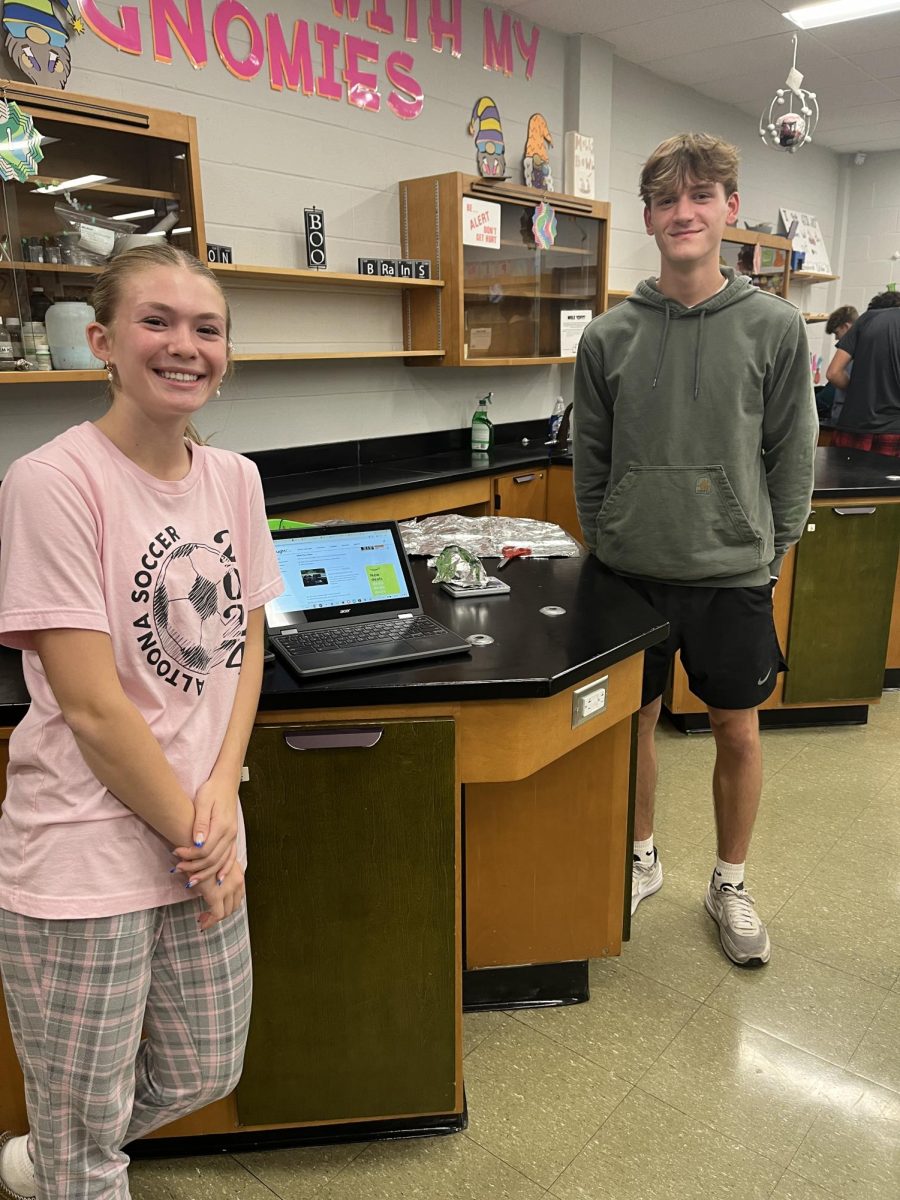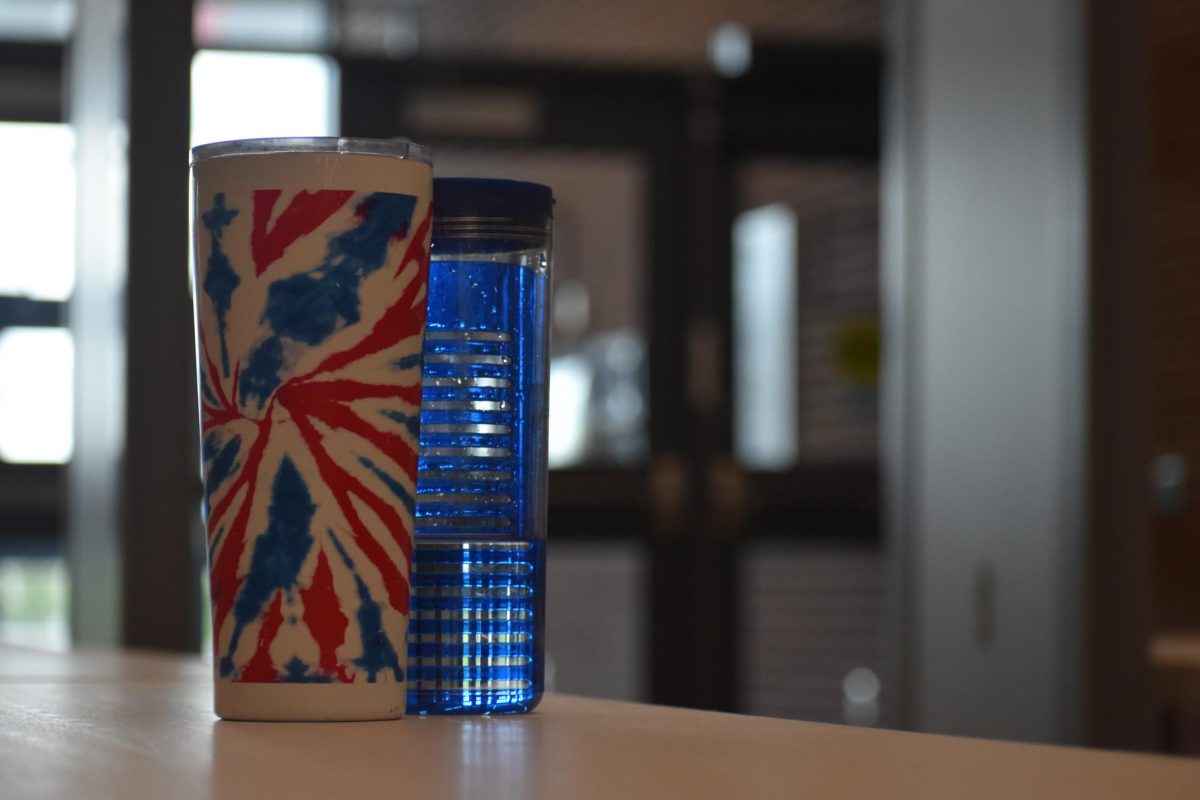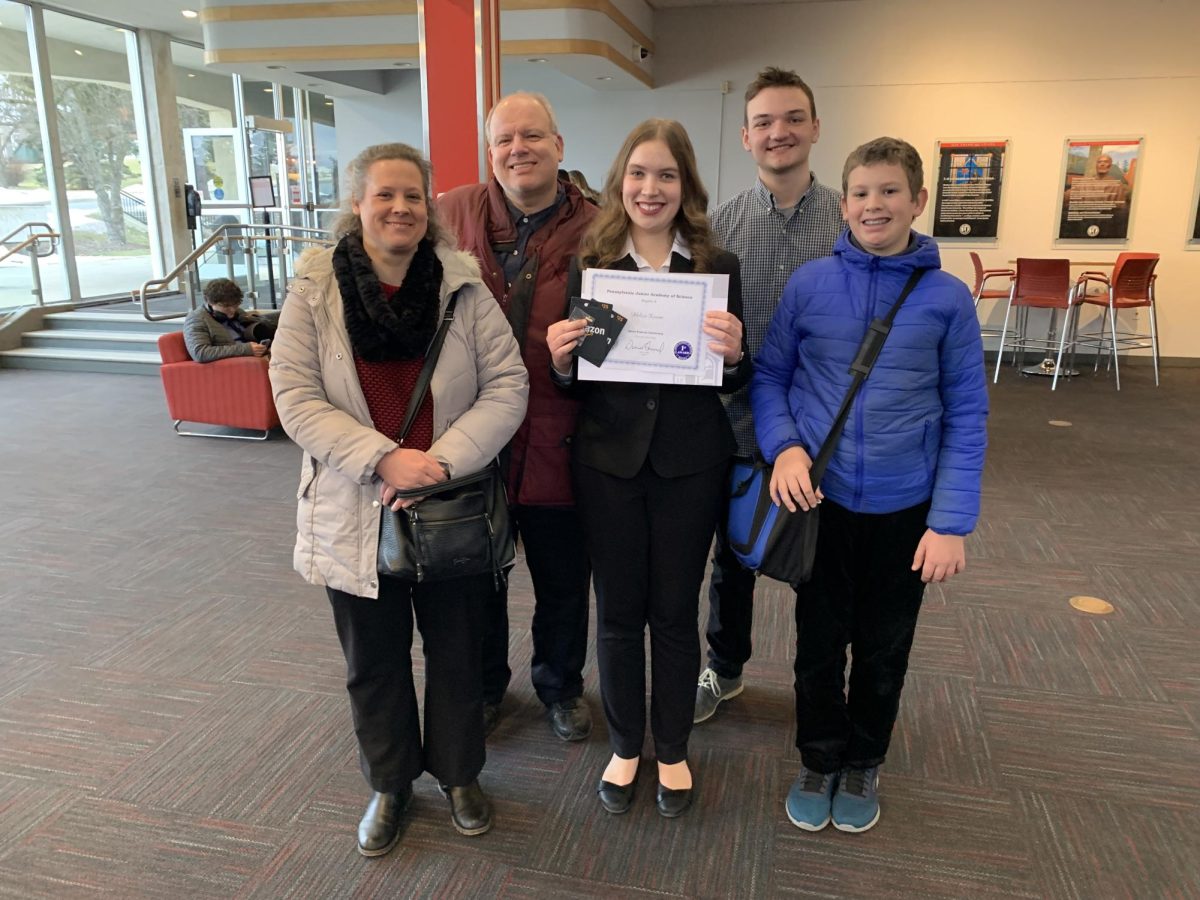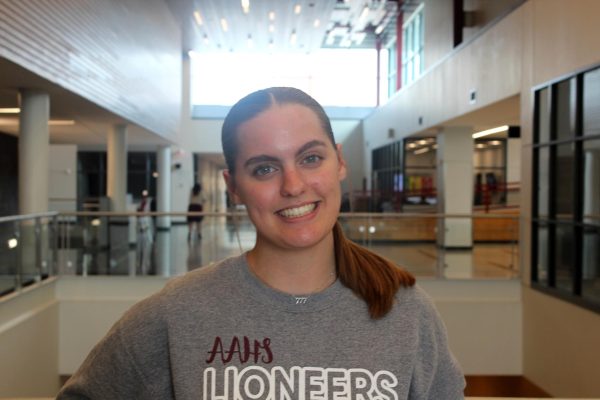Every year, chemistry students partake in Mole Day. Mole Day celebrates the number founded by Italian scientist of the 1800s, Avogadro. This number is 6.02 x 10^23, hence why it is celebrated every year on Oct. 23, and it represents the number of units in one mole of any substance.
Chemistry teacher Christine Falger has been celebrating the chemistry holiday for 26 years so far. She has done this every year since she started teaching.
“A mole is a quantity,” Falger said. “So, just like a dozen is 12, a mole is 6.02 times 10^23, which is a really, really, really long number and it’s a large, very large one. We have different stations set up, so they [students] can actually see moles in different aspects of the science.”
Different mole day stations were positioned around the classroom to enhance students’ understanding of the concept.
“It’s engaging for everyone,” Falger said. “If you’re artistic, we have something for you, if you’re more of a writer, we have something for you, or if you’re a sculptor, we have something for you. It’s differentiated so that everyone enjoys it.”
Stations included “sculpt a mole,” where students were tasked with building a mole figurine, a “mole memory” game with mole facts and “Hall-Mole” cards to celebrate the holiday.
Students were able to bring in food that incorporates the mole in some way. Sophomore Adrian Pacifico has chemistry seventh period, and brought in brownies.
“Me and my brother made brownies with 6.02 on them,” Pacifico said. “We looked it up that moles eat worms, so I made dirt with gummy worms, too.”
Other students brought in cakes and cookies to represent moles.
Sophomore Seyenna Gordon bought notebooks and mole stickers for classmates to use during the chemistry holiday. She reflected on how learning about the mole can help her in the classroom.
“I learned how the equation works,” Gordon said. “It can help me complete different activities in class and with homework.”
The equation for the mole is used in each activity provided at the mole day celebration. Mole day is celebrated yearly between the chemistry teachers and their classes.
“Chemistry should be fun,” Falger said. “We should have a good time when chemistry rolls around. I don’t want them just sitting at their desks doing work. I want them actually getting up and getting engaged.”









